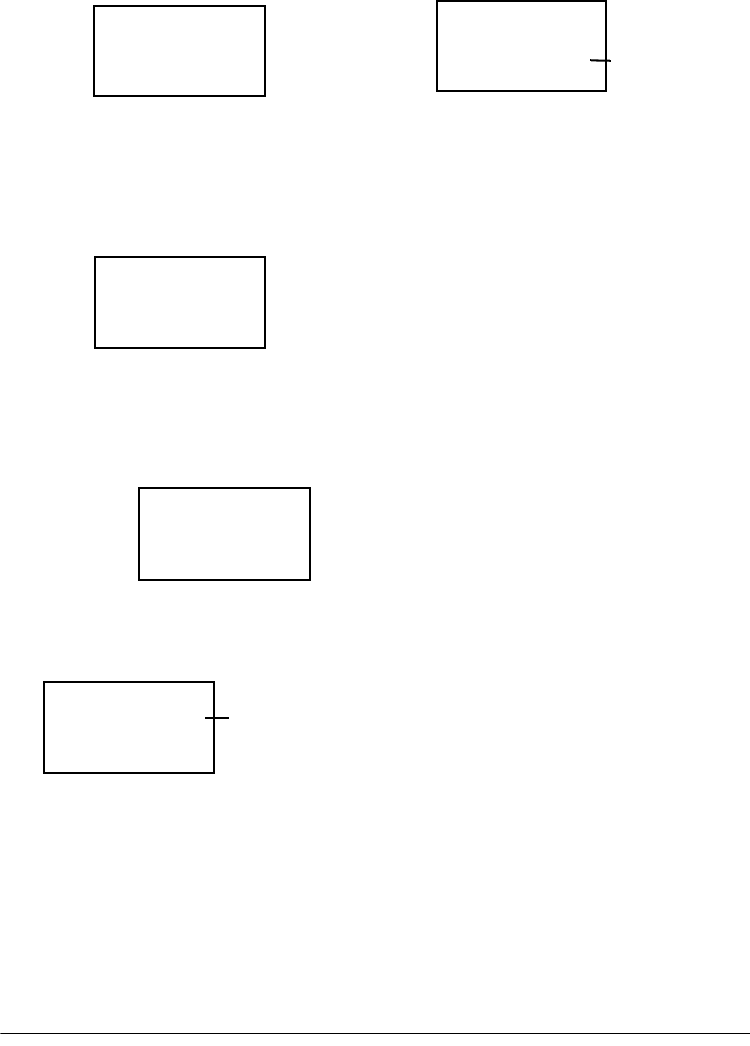
32
Trunking Operation
talk group ID decoding method to be
used for the bank.
Notes:
• If you select
*FKýKILEB<;
*FKýKILEB<;*FKýKILEB<;
*FKýKILEB<;
instead of
)+0
)+0)+0
)+0
, or
!
! !
!
, the scanner does not
trunk. Instead,
*FKý KILEB<;ôý ,I<JJ
*FKý KILEB<;ôý ,I<JJ*FKý KILEB<;ôý ,I<JJ
*FKý KILEB<;ôý ,I<JJ
DF;<
DF;<DF;<
DF;<
appears.
• If you programmed a Motorola Type I
or Hybrid system, see “Programming
Fleet Maps” on Page 33.
4. Press
PROG
to enter the program mode.
5. Enter the desired trunking frequency
using the keypad and decimal point then
press
ENTER
to store.
6. To enter additional trunking frequencies
as subsequent channels in the same
bank, press
PROG
or
8
88
8
to access the
next open channel then enter the fre-
quencies. (See “Storing Known Fre-
quencies into Channels” on Page 15).
7. Press
SCAN
to start scanning.
Notes:
• If you make an error in the entry pro-
cess, press
CLEAR
as often as needed
to erase the incorrect data.
• If you enter a frequency that has already
been entered, the scanner sounds an
error tone and displays
LGCôý=
LGCôý= LGCôý=
LGCôý=
and the
channel number that has been dupli-
cated. If the dual entry is an error, press
CLEAR
and enter the correct frequency.
If the dual entry is intentional, press
ENTER
to accept.
• You can replace any frequency by
selecting the bank and channel, press-
ing
PROG
and entering the new fre-
quency.
Programming Motorola Trunking
Systems (UHF-Lo)
You can program the scanner to receive
transmissions in the UHF-Lo band (406-512
MHz) of the Motorola trunking system. You
can receive these transmissions by checking
the trunking system's control channel. You
must program the system's base frequency
and offset frequency to do this.
Note:
Base and offset frequencies vary for
each type of trunking system. You can get in-
formation about these frequencies for the
trunking system you want to scan using
www.trunkscanner.com
,
other Internet
sources, or locally published guidebooks.
â8EBýò
â8EBýòâ8EBýò
â8EBýòVò
VòVò
Vò +*
+*+*
+*
% ý*+ôýòò
% ý*+ôýòò% ý*+ôýòò
% ý*+ôýòò
)+0èýEFE<
)+0èýEFE<)+0èýEFE<
)+0èýEFE<
â8EBýò
â8EBýòâ8EBýò
â8EBýò
*FKýKILEB<;
*FKýKILEB<;*FKýKILEB<;
*FKýKILEB<;
,I<JJýDF;<ô
,I<JJýDF;<ô,I<JJýDF;<ô
,I<JJýDF;<ô
,òòòUôô
,òòòUôô,òòòUôô
,òòòUôô ôö")
ôö") ôö")
ôö")
òôòòòòò
òôòòòòòòôòòòòò
òôòòòòò
â8EBýòý
â8EBýòýâ8EBýòý
â8EBýòý á?ýòò
á?ýòòá?ýòò
á?ýòò
Program
mode
,òòòUôô
,òòòUôô,òòòUôô
,òòòUôô ôö")
ôö") ôö")
ôö")
êììôïêëí
êììôïêëíêììôïêëí
êììôïêëí
â8EBýòý
â8EBýòýâ8EBýòý
â8EBýòý á?ýòò
á?ýòòá?ýòò
á?ýòò
Frequency
,òòñUôô
,òòñUôô,òòñUôô
,òòñUôô ôö")
ôö") ôö")
ôö")
òôòòòòò
òôòòòòòòôòòòòò
òôòòòòò
â8EBýòý
â8EBýòýâ8EBýòý
â8EBýòý á?ýòñ
á?ýòñá?ýòñ
á?ýòñ
Next channel


















